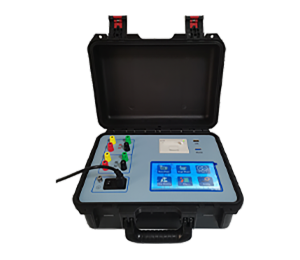 English
English


Loop Impedance Measurement Device for Electrical Safety Testing and Compliance
Understanding the Loop Impedance Meter A Key Tool for Electrical Safety
In the realm of electrical safety, ensuring the integrity of electrical installations is paramount. One essential instrument in this process is the loop impedance meter, a specialized device designed to measure the impedance of the earth fault loop in an electrical installation. This article delves into the importance of loop impedance measurement, how these meters function, and their role in maintaining safety standards.
What Is Loop Impedance?
Loop impedance refers to the total impedance presented by the earth fault loop, which includes the phase conductor, the neutral conductor, and the earth conductor. When an electrical fault occurs—such as a short circuit or ground fault—this loop impedance plays a critical role in determining how effectively the protective devices, like circuit breakers or fuses, will operate. A low loop impedance allows sufficient fault current to flow, ensuring that these protective devices can trip and disconnect the faulty circuit, thus preventing potential hazards such as electric shock or fire.
The Importance of Loop Impedance Meters
Loop impedance meters are essential for testing and verifying the safety of electrical installations. Regular testing helps ensure that the installation complies with safety regulations and standards, such as those set forth by the National Electrical Code (NEC) or the International Electrotechnical Commission (IEC). An effective testing program not only safeguards against electrical shocks but also enhances the reliability of electrical systems.
When electricians or technicians use a loop impedance meter, they can identify potential issues within the circuit, such as high resistance connections, faulty earth connections, or wiring defects. By addressing these problems promptly, professionals can mitigate the risks of electrical failures and increase the overall safety of the installation.
How Does a Loop Impedance Meter Work?
Loop impedance meters operate by injecting a small known current into the earth fault loop and measuring the voltage drop across the loop. By applying Ohm's Law—voltage equals current times resistance—the device can calculate the total loop impedance. Most modern meters offer various testing modes, including
loop impedance meter

1. High-current Testing This mode applies a substantial test current to simulate a fault condition, providing a realistic assessment of the loop impedance under fault circumstances. 2. Low-current Testing A safer, lower-level test used in sensitive environments, it can also assess the loop impedance without disturbing the circuit significantly.
3. RCD Testing Some loop impedance meters are equipped with functionality to test residual current devices (RCDs) by assessing how quickly they trip under fault conditions.
Best Practices for Using Loop Impedance Meters
To achieve accurate readings and successful testing outcomes, it is vital to follow best practices when using loop impedance meters
- Calibrate the Device Regular calibration ensures that the meter provides accurate measurements. Before testing, users should verify the calibration status of the device. - Select the Appropriate Test Mode Different scenarios demand different testing modes. Choosing the correct setting is crucial, especially in sensitive environments.
- Check Connections Ensure all connections are secure and free from corrosion, which can affect impedance readings.
- Follow Safety Protocols Always adhere to safety guidelines, including using appropriate personal protective equipment (PPE) and following lockout/tagout procedures to prevent accidental energization during testing.
Conclusion
The loop impedance meter is an indispensable tool in the toolkit of electricians and electrical engineers dedicated to ensuring the safety and reliability of electrical systems. By accurately measuring the loop impedance, professionals can assess the effectiveness of protective devices, identify potential issues, and maintain compliance with safety regulations. In an age where electrical safety is more critical than ever, understanding and utilizing loop impedance meters is a vital step in protecting lives and infrastructure from electrical hazards. With regular testing and maintenance, we can foster safer electrical environments for homes, businesses, and public spaces alike.
-
Differences between open cup flash point tester and closed cup flash point testerNewsOct.31,2024
-
The Reliable Load Tap ChangerNewsOct.23,2024
-
The Essential Guide to Hipot TestersNewsOct.23,2024
-
The Digital Insulation TesterNewsOct.23,2024
-
The Best Earth Loop Impedance Tester for SaleNewsOct.23,2024
-
Tan Delta Tester--The Essential Tool for Electrical Insulation TestingNewsOct.23,2024





